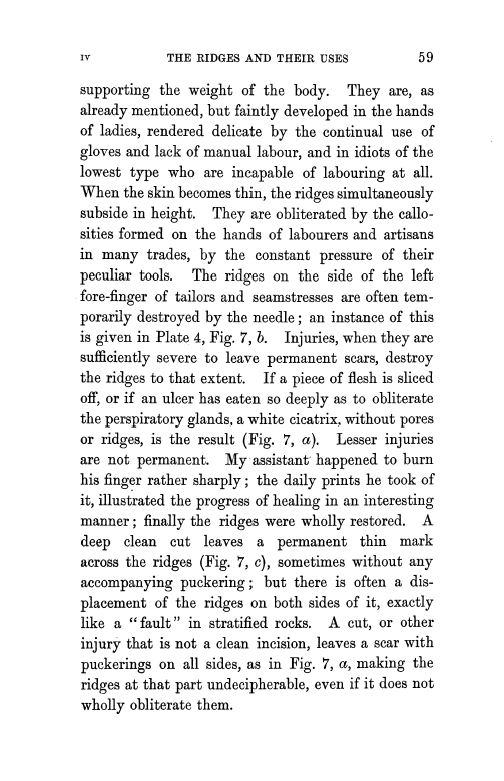IV
THE RIDGES AND THEIR USES 5 9
supporting the weight of the body. They are, as already mentioned, but faintly developed in the hands of ladies, rendered delicate by the continual use of gloves and lack of manual labour, and in idiots of the lowest type who are incapable of labouring at all. When the skin becomes thin, the ridges simultaneously subside in height. They are obliterated by the callosities formed on the hands of labourers and artisans in many trades, by the constant pressure of their peculiar tools. The ridges on the side of the left fore-finger of tailors and seamstresses are often temporarily destroyed by the needle ; an instance of this is given in Plate 4, Fig. 7, b. Injuries, when they are sufficiently severe to leave permanent scars, destroy the ridges to that extent. If a piece of flesh is sliced off, or if an ulcer has eaten so deeply as to obliterate the perspiratory glands, a white cicatrix, without pores or ridges, is the result (Fig. 7, a). Lesser injuries are not permanent. My - assistant happened to burn his finger rather sharply ; the daily prints he took of it, illustrated the progress of healing in an interesting manner ; finally the ridges were wholly restored. A deep clean cut leaves a permanent thin mark across the ridges (Fig. 7, c), sometimes without any accompanying puckering ; but there is often a displacement of the ridges on both sides of it, exactly like a "fault" in stratified rocks. A cut, or other injury that is not a clean incision, leaves a scar with puckerings on all sides, as in Fig. 7, a, making the ridges at that part undecipherable, even if it does not wholly obliterate them.
